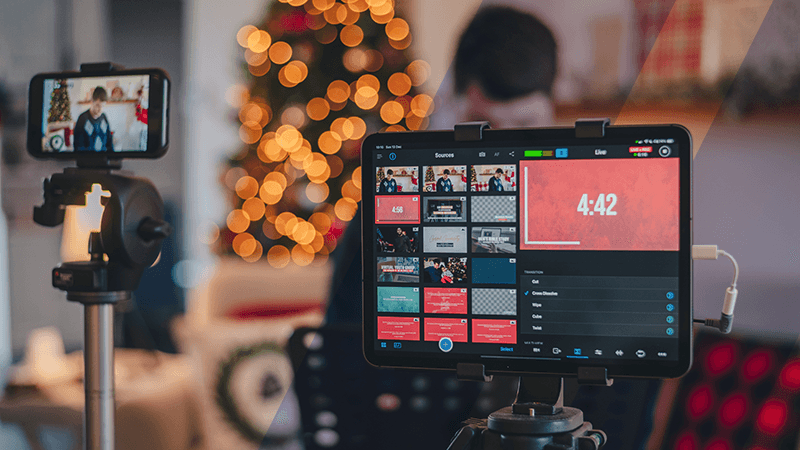In today's digital age, the design of a website can either make or break a business. It's the first impression that potential customers will have of your brand, and it's essential to make it a good one.
But where do you start? How do you create a website that not only looks great but also functions seamlessly and effectively?
In this article, we'll be sharing expert tips on how to improve your web design like a pro. From understanding the psychology of color to crafting a user-friendly layout, these tips will help you elevate your website to something your potential users will love.
Before we dive in and discover how to make your website shine in the digital world, let’s begin first with some of a few concepts about web design.
What are the 3 principles of good web design?
Understanding these principles is crucial to improving your website design because they directly impact the user experience.
A website that is easy to navigate and understand, accessible to all users, and optimized for different devices will ultimately lead to a more positive user experience and increased engagement on the site.
Here are the three must-follow principles of good website design to improve your overall website performance:
Usability
Good web design should be easy for users to navigate and understand. This includes having a clear layout, intuitive navigation, and easily readable text.
A clear layout is critical to the visual organization of the website's content. This includes the use of whitespace, proper alignment, and consistent use of typography and color. A clear layout makes it easy for users to quickly find what they are looking for, and understand the hierarchy of information on the site.
Intuitive navigation provides ease with which users can find their way around the site. This includes the use of a clear and consistent navigation structure, such as a navigation menu that is easy to find and use. The navigation should be self-explanatory, and users should be able to find what they are looking for in as few clicks as possible.
Easily readable text ensures the correct use of proper typography and font sizes. Text should be easy to read on different screen sizes, and the use of color should not compromise the readability of the text. Good web design should also consider the use of font-size adjustments and line-spacing for easy reading.
Accessibility
Accessibility in web design refers to the practice of designing and developing websites that can be used by people of all abilities, including those with disabilities. This includes individuals who may use assistive technologies such as screen readers, which read the text on the website out loud for users who are visually impaired.
Providing alternative text (alt-text) for images is one of the key ways to make a website accessible. Alt-text is a brief description of an image that can be read by screen readers, and it allows visually impaired users to understand the context and content of the image. Properly labeled and described images also help search engines to understand the content of the website and therefore improve the website's SEO.
Using proper headings, also known as semantic headings, is another important aspect of accessibility. Headings should be used to indicate the hierarchical structure of the content, making it easier for users to navigate the content, including those using assistive technologies.
Designing for keyboard navigation is another accessibility aspect, it means to make sure that all the interactive elements on the website, such as links and buttons, can be accessed and used by keyboard alone. This enables users who cannot use a mouse to still navigate and interact with the website.
Responsiveness
Responsive web design is the practice of designing and developing websites that adapt to different screen sizes and devices. This means that the website will look and function correctly on a variety of devices, including desktop computers, laptops, tablets, and smartphones.
When a website is optimized for different screen sizes and devices, it ensures that users have a consistent experience regardless of how they access the site. This is important because more and more users are accessing the internet using mobile devices, and it's crucial to provide a seamless experience across all devices. With a responsive design, users can easily navigate, read and interact with the website, regardless of the device they use.
A responsive website will automatically adjust its layout and elements based on the screen size and device being used. This can include adjusting the font size, rearranging content, and hiding or showing certain elements. This is done using a combination of HTML, CSS and JavaScript to make the website fluid and adaptable to different devices.
Responsive design also helps to improve the website's SEO and search engine ranking, because Google and other search engines favor mobile-friendly websites. Additionally, a responsive design allows for a better user experience for all users, regardless of their device, which can lead to increased engagement and conversions.
What are the 5 elements of web design?
If you’re new to the industry and don’t know how to improve web design effectively, it pays to understand the five elements of web design. These are the five key elements of web design that are essential to creating a visually pleasing and user-friendly website.
Layout
This is the overall structure and organization of the website's content, including the use of whitespace, alignment, and consistent use of typography and color. The layout helps to guide the user's eye through the content and create a sense of hierarchy.
Typography
This refers to the use of text on the website, including font choices, font size, line spacing, and color. Proper typography helps to improve readability and create a consistent visual style.
Color
It pertains to the use of color on the website, including the choice of colors, color schemes, and the use of color to create contrast and emphasis. Color can also be used to create a mood or convey a message.
Images and media
This relates to how the website uses images, videos, and other types of material. This includes optimizing images and videos for loading time, as well as using alt-text for images to increase accessibility.
Navigation
This involves the structure and organization of the website's navigation, including the use of menus, links, and buttons. Navigation should be intuitive and easy to use, and it should help guide users through the website's content. Navigation plays a vital role in the user experience and the overall accessibility of the website.
What are the four 4 types of website design structure?
The importance of website design structures is that they are different ways of adapting the layout of a website to different screen sizes and devices. Choosing the right structure can assist you on how to improve web design effectively, ensuring your website is accessible and easy to use on different devices. Below the four types of web design structure you have to be familiar with:
Fixed-width design
This type of design uses a fixed width for the website layout, regardless of the screen size or device being used. This can be useful for creating a consistent visual style, but it can also make the website difficult to use on smaller screens, such as smartphones.
Fluid-width design
This type of design uses a flexible or fluid width for the website layout, which adjusts based on the screen size or device being used. This can be useful for creating a more responsive design that works well on different screens and devices.
Adaptive design
This type of design uses a combination of fixed and fluid widths, with specific layouts or elements that change based on the screen size or device being used. This can be useful for creating a more tailored experience for different devices, but it can also be more complex to implement.
Responsive design
This type of design uses a combination of fluid grids, flexible images, and CSS media queries to create a layout that automatically adapts to different screen sizes and devices. This is the most common and recommended approach for the current web, it can be useful for creating a consistent user experience across different devices and screen sizes, which is crucial for improving user engagement and conversions.
What is bad web page design?
Before we dive into the expert tips on how to improve web design, let’s discuss first what a bad web page design is. By doing so, you’re more likely to avoid negative user experience and losing potential users or customers on your site. Here are some ways to tell if a website has a bad web page design:
- Navigation: If the website is difficult to navigate, with unclear or confusing links, it may be a sign of poor design.
- Content organization: If the website's content is difficult to read or understand, with a lack of clear headings, poor typography, or cluttered layout, it may be a sign of poor design.
- Accessibility: If the website is not accessible, with issues such as poor color contrast, missing alt-text for images, or poor keyboard navigation, it may be a sign of poor design.
- Responsiveness: If the website does not display correctly on different devices or screen sizes, or if the layout is broken, it may be a sign of poor design.
- Speed: If the website is slow to load, with large images, videos or heavy scripts, it may be a sign of poor design.
- Branding and aesthetics: If the website lacks a consistent visual style, with poor use of color, typography, or images, it may be a sign of poor design.
- User experience: If the website does not help users to complete their desired tasks, or if it's not intuitive to use, it may be a sign of poor design.
- SEO: If the website is not optimized for search engines and is not responsive, it may be a sign of poor design.
Actionable Tips on How to Improve Web Design Like a Pro
The field of web design is constantly evolving and changing, and learning new tips and techniques will help you to stay competitive and relevant in the industry. If you’re a business owner struggling on how to improve web design effectively, then these are some actionable tips we recommend that you can start today:
Tip #1: Start with a clear goal and purpose
Determine what your website is meant to achieve, whether it's to generate leads, increase sales, or provide information. This will guide the design process and ensure that the final product is aligned with your business objectives.
Tip #2: Create a consistent visual style
Use a consistent color palette, typography, and imagery throughout the website. This will help to create a cohesive and professional look and feel.
Tip #3: Prioritize readability
Use a clear and easy-to-read font, and make sure that the text is well-organized and easy to scan. This will improve the user experience and make it easier for users to find what they are looking for.
Tip #4: Make it mobile-friendly
With more and more users accessing the internet on mobile devices, it's crucial to make sure that your website is mobile-friendly and responsive. This will ensure that users have a consistent experience regardless of how they access the site.
Tip #5: Use whitespace effectively
Use whitespace to create visual hierarchy and make the website easy to navigate. This will help to improve the user experience and make it easier for users to find what they are looking for.
Tip #6: Optimize for speed
Make sure that your website loads quickly by optimizing images and videos, and by minimizing the use of heavy scripts. This will help to improve the user experience and keep users engaged on the site.
Tip #7: Make it accessible
Make sure that your website is accessible to users with disabilities, including those using assistive technologies such as screen readers. This includes providing alternative text for images, using proper headings, and designing for keyboard navigation.
Tip #8: Get feedback and test
Get feedback from users and test the website for usability and accessibility. This will help you to identify any issues and make improvements accordingly.
Tip #9: Continuously improve
Continuously evaluate and improve your website design, keep an eye on the latest trends, and apply them to your website. This will help you to stay competitive and relevant in the industry.
Tip #10: Outsource web design work
If you need expert hands in transforming your site into an easy-to-navigate website that attracts and converts visitors, then you may consider web design outsourcing. When you outsource a web designer, you only pay for the service you need which allows you to save on staffing costs.
Optimize Your Retail Web Presence with Outsourced Customer Care and Web Design Insights
Elevate your retail success by combining outsourced customer care with insightful web design, a strategy that can significantly enhance your online presence. ManilaPros offers a comprehensive solution where customer care insights directly inform and improve your web design process.
ManilaPros, a full-service outsourcing company in the Philippines, offers five-star customer care for retailers who want to be closer to their customers' needs and preferences. Our vetted customer care Pros are thoroughly screened by our recruitment powerhouse, and are equipped with specialized on-brand training.
Book a call with us today to learn more about our retail customer care services.




